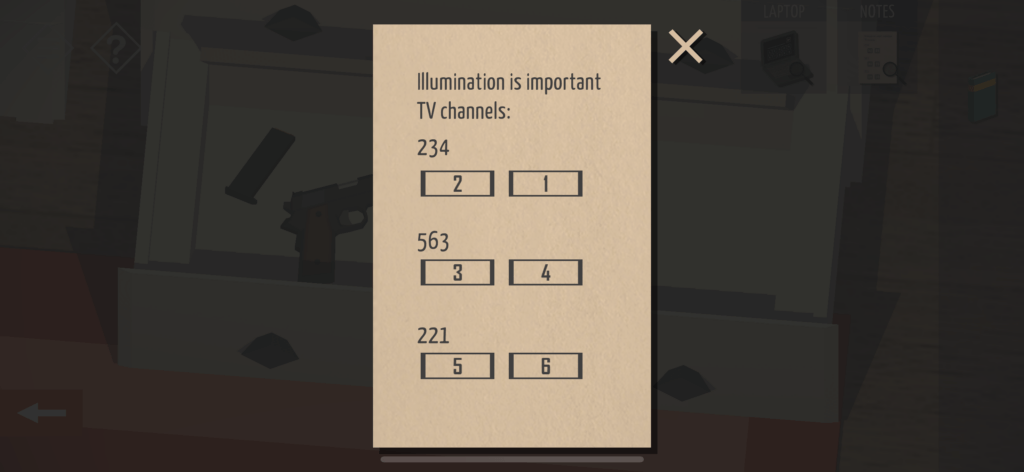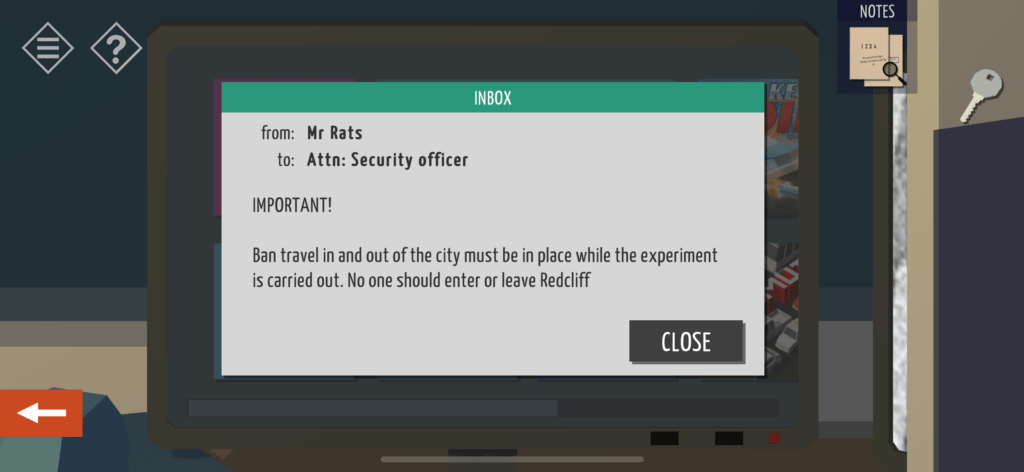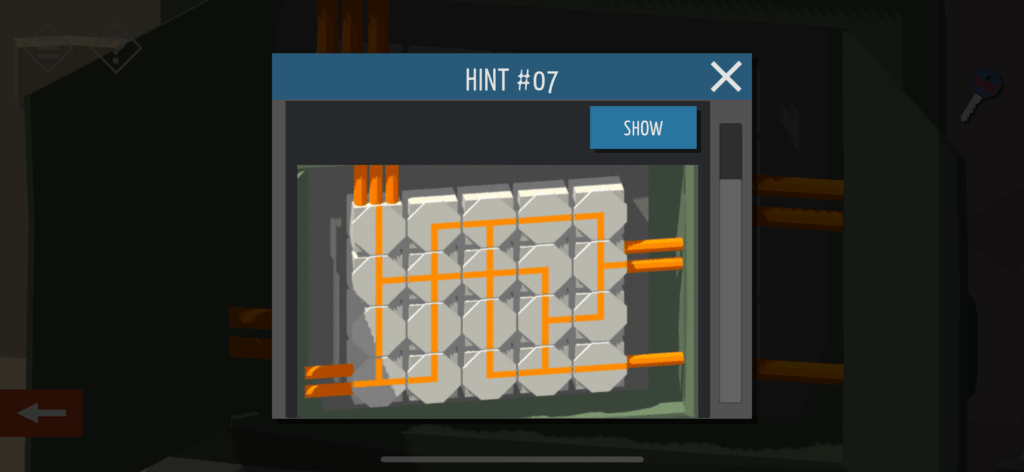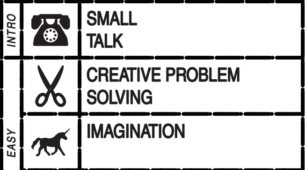The game I played this week was Tiny Room Story: Town Mystery, an escape room game developed by Kiary Games. It is available on mobile and desktop platforms and is aimed at those ages 8 and up who enjoy puzzles and mystery. In the game, you are a private detective who goes to a small town called Radcliffe to uncover why the city has been abandoned.
At its core, the game primarily uses an enacted narrative structure, where the story unfolds through the player’s interactions with the space. I played two chapters on my iPhone, and each level was a self-contained environment that could be rotated 360 degrees. The isometric view intentionally limits visibility to two walls at a time, requiring rotation to see what might be on the other sides. This mechanic reinforces the game’s themes of investigation and discovery, as the player quite literally needs to turn the world to see the whole picture.
Architecture plays a significant role in communicating the narrative. Locked doors and blocked staircases serve not just as constraints but as story cues. As players, we’re naturally drawn to sealed drawers because they imply secrets. The missing furniture and disheveled room hint at a break-in, and broken wires suggest sabotage. These are intentional narrative clues that draw players deeper into a detective’s mindset.

The puzzles are also not just arbitrary logic games but reflect the everyday logic of the real world. For instance, one of the most mind-boggling interactions I had was turning on hot water, which steamed up the bathroom and revealed a hidden clue in the mirror. This makes the architecture feel familiar and intuitive, making the believability of the space so much stronger so players truly feel like they’re piecing together a mystery.

However, one drawback is that because the game focuses so heavily on puzzles, there is little emotional engagement. There are narrative reveals like references to experiments in town or hidden guns in a seemingly normal home, but the game is largely plot-driven. Thus, the puzzles feel more like a means to unlock the next level rather than to unfold a story.

One major accessibility challenge in this game, and escape rooms in general, is difficulty. For players with cognitive disabilities or even just younger audiences who might be newer to spatial puzzle-solving, difficulty can create significant barriers that disrupt narrative flow. Getting stuck can lead to frustration or even cause players to abandon the game entirely. To prevent this, the game includes a context-aware hint system that offers players either a subtle nudge or the complete solution depending on what they want. This preserves the player’s agency by allowing them to determine when and how much help to get, thus respecting diverse skill levels.

However, the hint system also requires players to watch a one-minute ad for each hint, which introduces unnecessary friction, especially for those who rely on frequent support. While the intention may have been to discourage overuse, this design choice can unintentionally punish players with attention difficulties or cognitive fatigue, in which the added delay significantly disrupts immersion and turns the accessibility tool into a barrier.

Other design choices that present accessibility concerns include the rotating and tap mechanics, which demand fine motor precision to be able to click into objects. Even I found myself tapping repeatedly on objects I assumed were decorative, only to find they were interactive after using a hint. The game offers no alternative control schemes, and for players with motor impairments, the lack of feedback or tap assistance may make the game frustrating or inaccessible. Additionally, the game relies on small visual cues such as subtle lock colors, which can be difficult to detect for players with low vision. While zoom functionality is technically available, using it requires precise gestures and can be tedious, adding another layer of difficulty.
Overall, however, Tiny Room Story: Town Mystery demonstrates how architecture and mechanics can be the narrative itself. The rotating isometric environments and embedded puzzles allow players to reveal the story through exploration, and while its emotional depth is limited, the game remains successful in using the environment to foster a narrative experience.


